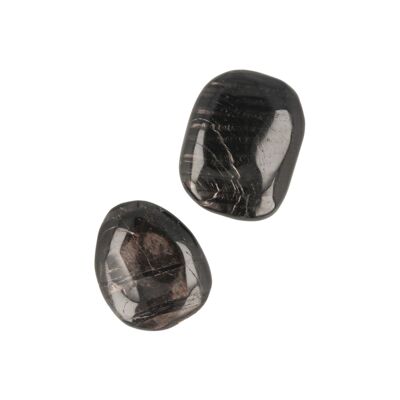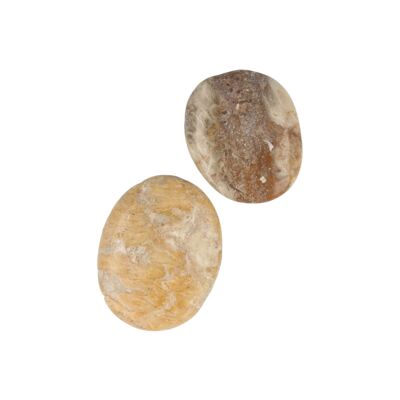


The Stichtite in Matrix Pocket Stone is a unique gemstone from Australia. This handy stone, measuring 3cm, combines the vibrant purple hues of stichtite with the green background of serpentine, resulting in a striking and harmonious colour contrast. Stichtite is a rare mineral often found in association with serpentine, especially in areas with ultramafic rocks. Effect of Stichtite in Matrix Emotional and Spiritual Properties Stichtite is known for its calming and protective properties. It helps release negative emotions and promotes emotional balance. In addition, it supports spiritual growth and helps open the heart chakra, which stimulates compassion and love. Physical Properties Physically, stichtite is associated with strengthening the immune system and detoxifying the body. It can provide support for skin problems and helps repair tissue after injuries. In addition, it is believed to have a positive effect on the nervous system and can help reduce stress-related complaints. Applications of the Pocket Stone Stichtite in Matrix This pocket stone is ideal to carry with you every day, allowing you to continuously benefit from the energetic properties of stichtite. It is also a valuable addition during meditation and spiritual practices, helping to promote inner peace and balance. In addition, the stone can serve as a decorative object in living or working spaces, creating a natural and harmonious atmosphere.:contentReference[oaicite:6]{index=6} Characteristics of Stichtite in Matrix Chemical Composition: Stichtite is a hydrated magnesium chromium carbonate (Mg₆Cr₂CO₃(OH)₁₆·4H₂O) Hardness: 1.5 to 2 on the Mohs scale Colour: Purple to pink hues, often in combination with green serpentine Locations Stichtite is mainly found in Australia, particularly in Tasmania, where it was first discovered. Other localities include South Africa and Canada, where it occurs associated with serpentine in ultramafic rocks. Naming The name 'stichtite' is derived from Robert Carl Sticht, an American mining engineer and amateur mineralogist who made important contributions to the study of minerals. The discovery in Tasmania led to the naming of this unique mineral. Disclaimer It is and remains important to always seek medical help from a treating physician, where necessary. While we attempt to share essential information on this site that could greatly benefit everyone's well-being, it is not intended to encourage anyone to avoid seeking medical care. On the contrary! If you have any complaints, always consult your doctor first! In addition, we advise never to delay seeking professional care or disregard previously obtained medical advice based on information found online.



















